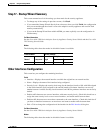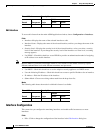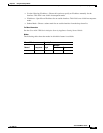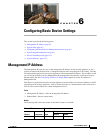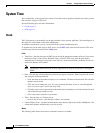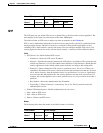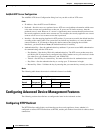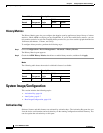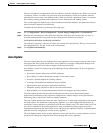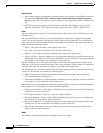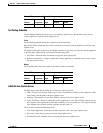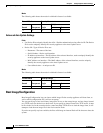
6-3
Cisco ASDM User Guide
OL-16647-01
Chapter 6 Configuring Basic Device Settings
System Time
NTP
The NTP pane lets you define NTP servers to dynamically set the time on the security appliance. The
time displays in the status bar at the bottom of the main ASDM pane.
Time derived from an NTP server overrides any time set manually in the Clock pane.
NTP is used to implement a hierarchical system of servers that provide a precisely synchronized time
among network systems. This kind of accuracy is required for time-sensitive operations, such as
validating CRLs, which include a precise time stamp. You can configure multiple NTP servers. The
security appliance chooses the server with the lowest stratum—a measure of how reliable the data is.
Fields
• NTP Server List—Shows defined NTP servers.
–
IP Address—Shows the NTP server IP address.
–
Interface—Specifies the outgoing interface for NTP packets, if configured. The system does not
include any interfaces, so it uses the admin context interfaces. If the interface is blank, then the
security appliance uses the default admin context interface according to the routing table.
–
Preferred?—Shows whether this NTP server is a preferred server, Yes or No. NTP uses an
algorithm to determine which server is the most accurate and synchronizes to that one. If servers
are of similar accuracy, then the preferred server is used. However, if a server is significantly
more accurate than the preferred one, the security appliance uses the more accurate one. For
example, the security appliance uses a more accurate server over a less accurate server that is
preferred.
–
Key Number—Shows the authentication key ID number.
–
Trusted Key?—Shows if the key is a trusted key, Yes or No. The key must be trusted for
authentication to work.
• Enable NTP Authentication—Enables authentication for all servers.
• Add—Adds an NTP server.
• Edit—Edits an NTP server.
• Delete—Deletes and NTP server.
Modes
The following table shows the modes in which this feature is available:
Firewall Mode Security Context
Routed Transparent Single
Multiple
Context System
• • •— •
Firewall Mode Security Context
Routed Transparent Single
Multiple
Context System
• • •— •



